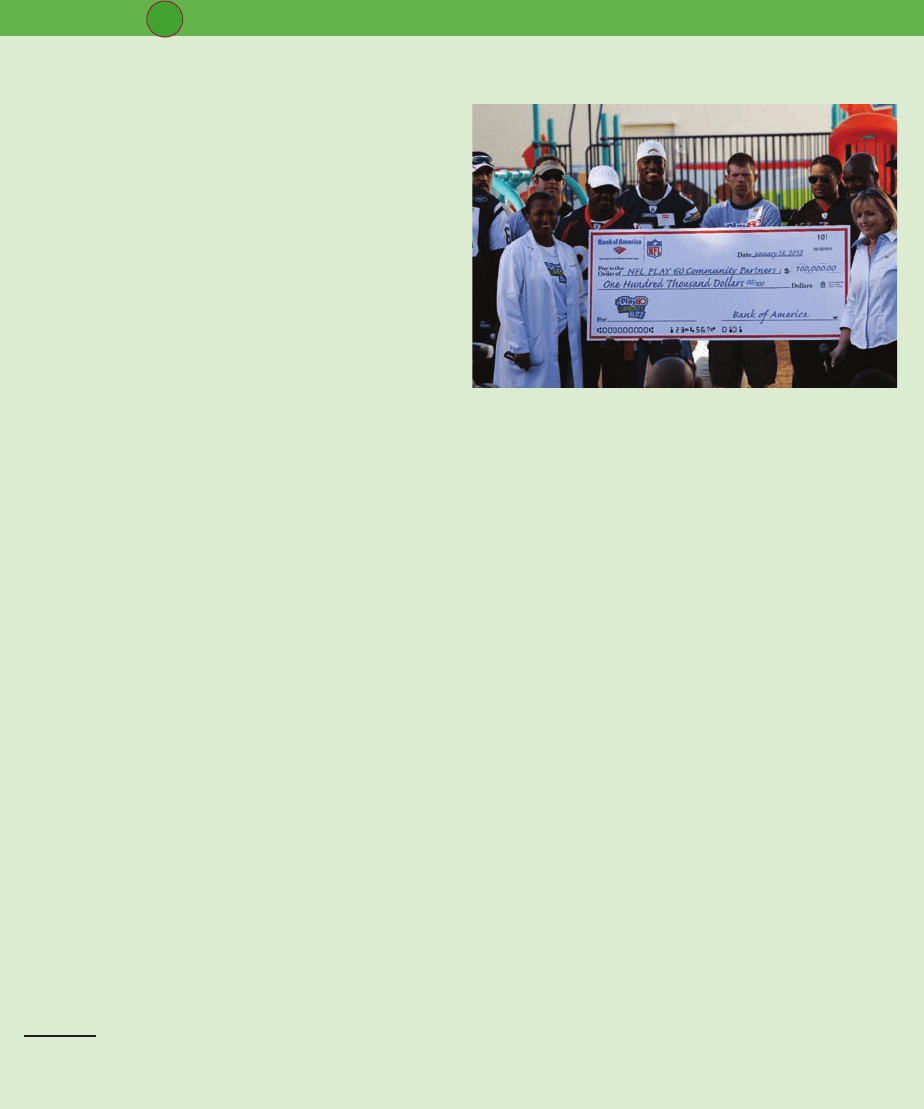Anderson D.R., Sweeney D.J., Williams T.A. Essentials of Statistics for Business and Economics
Подождите немного. Документ загружается.


Interval Estimation of μ
1
and μ
2
We will use the data for the checking account balances example presented in Section 10.2.
Begin by using the Data Set Manager to create a StatTools data set for these data using the
procedure described in the appendix in Chapter 1. The following steps can be used to compute
a 95% confidence interval estimate of the difference between the two population means.
Step 1. Click the StatTools tab on the Ribbon
Step 2. In the Analyses group, click Statistical Inference
Step 3. Select the Confidence Interval option
Step 4. Choose Mean/Std. Deviation
Step 5. When the StatTools—Confidence Interval for Mean/Std. Deviation dialog box
appears:
For Analysis Type, choose Two-Sample Analysis
In the Variables section,
Select Cherry Grove
Select Beechmont
In the Confidence Intervals to Calculate section,
Select the For the Difference of Means option
Select 95% for the Confidence Level
Click OK
Because the sample size for Cherry Grove (n
1
28) differs from the sample size for Beech-
mont (n
2
22), StatTools will inform you of this difference after you click OK in step 5. A
dialog box will appear saying “The variable Beechmont contains missing data, which this
analysis will ignore.” Click OK. AChoose Variable Ordering dialog box then appears, indi-
cating that the analysis will compare the difference between the Cherry Grove data set and
the Beechmont data set. Click OK and the StatTools interval estimation output will appear.
Hypothesis Tests About μ
1
and μ
2
We will use the software evaluation example and the completion time data presented in Table
10.1. Begin by using the Data Set Manager to create a StatTools data set for these data using the
procedure described in the appendix in Chapter 1. The following steps can be used to test the
hypothesis: H
0
: μ
1
μ
2
0 against H
a
: μ
1
μ
2
0.
Step 1. Click the StatTools tab on the Ribbon
Step 2. In the Analyses group, click Statistical Inference
Step 3. Select the Hypothesis Test option
Step 4. Choose Mean/Std. Deviation
Step 5. When the StatTools—Hypothesis Test for Mean/Std. Deviation dialog box
appears:
For Analysis Type, choose Two-Sample Analysis
In the Variables section,
Select Current
Select New
In the Hypothesis Test to Perform section,
Select Difference of Means
Enter 0 in the Null Hypothesis Value box
Select GreaterThan Null Value (One-Tailed Test) in the Alternative
Hypothesis box
Click OK
When the Choose Variable Ordering dialog box appears, click OK
The results of the hypothesis test will then appear.
Appendix 10.5 Inferences About Two Populations Using StatTools 445
file
W
EB
CheckAcct
file
WEB
SoftwareTest
CH010.qxd 8/16/10 7:49 PM Page 445
Copyright 2010 Cengage Learning. All Rights Reserved. May not be copied, scanned, or duplicated, in whole or in part. Due to electronic rights, some third party content may be suppressed from the eBook and/or eChapter(s).
Editorial review has deemed that any suppressed content does not materially affect the overall learning experience. Cengage Learning reserves the right to remove additional content at any time if subsequent rights restrictions require it.

Inferences About the Difference Between Two
Population Means: Matched Samples
StatTools can be used to develop interval estimates and conduct hypothesis tests for the differ-
ence between population means for the matched samples case. We will use the matched-sample
completion times in Table 10.2 to illustrate.
Begin by using the Data Set Manager to create a StatTools data set for these data using the
procedure described in the appendix in Chapter 1. The following steps can be used to compute
a 95% confidence interval estimate of the difference between the population mean completion
times.
Step 1. Click the StatTools tab on the Ribbon
Step 2. In the Analyses group, click Statistical Inference
Step 3. Select the Confidence Interval option
Step 4. Choose Mean/Std. Deviation
Step 5. When the StatTools—Confidence Interval for Mean/Std. Deviation dialog box
appears:
For Analysis Type, choose Paired-Sample Analysis
In the Variables section,
Select Method 1
Select Method 2
In the Confidence Intervals to Calculate section,
Select the For the Difference of Means option
Select 95% for the Confidence Level
If selected, remove the check in the For the Standard Deviation box
Click OK
When the Choose Variable Ordering dialog box appears, click OK
The confidence interval will appear.
Conducting hypothesis tests for the matched samples case is very similar to conducting
hypothesis tests for the difference in two means shown previously. Choose the Hypothesis
Test option in step 3. Then when the Hypothesis Test for Mean/Std. Deviation dialog box
appears, describe the type of hypothesis test desired.
Appendix 10.6 Analysis of Variance Using StatTools
In this appendix we show how StatTools can be used to test for the equality of k population
means for a completely randomized design. We use the Chemitech data in Table 10.3 to il-
lustrate. Begin by using the Data Set Manager to create a StatTools data set for these data
using the procedure described in the appendix in Chapter 1. The following steps can be used
to test for the equality of the three population means.
Step 1. Click the StatTools tab on the Ribbon
Step 2. In the Analyses group, click Statistical Inference
Step 3. Select the One-Way ANOVA option
Step 4. When the StatTools-One-Way ANOVA dialog box appears:
In the Variables section:
Click the Format button and select Unstacked
Select Method A
Select Method B
Select Method C
Select 95% in the Confidence Level box
Click OK
446 Chapter 10 Comparisons Involving Means, Experimental Design, and Analysis of Variance
file
WEB
Matched
file
WEB
Chemitech
CH010.qxd 8/16/10 7:49 PM Page 446
Copyright 2010 Cengage Learning. All Rights Reserved. May not be copied, scanned, or duplicated, in whole or in part. Due to electronic rights, some third party content may be suppressed from the eBook and/or eChapter(s).
Editorial review has deemed that any suppressed content does not materially affect the overall learning experience. Cengage Learning reserves the right to remove additional content at any time if subsequent rights restrictions require it.

Note that in step 4 we selected the Unstacked option after clicking the Format button. The
Unstacked option means that the data for the three treatments appear in separate columns
of the worksheet. In a stacked format, only two columns would be used. For example, the
data could have been organized as follows:
Appendix 10.6 Analysis of Variance Using StatTools 447
Data are frequently recorded in a stacked format. For stacked data, simply select the Stacked
option after clicking the Format button.
ABC
1 Method Units Produced
2 Method A 58
3 Method A 64
4 Method A 55
5 Method A 66
6 Method A 67
7 Method B 58
8 Method B 69
9 Method B 71
10 Method B 64
11 Method B 68
12 Method C 48
13 Method C 57
14 Method C 59
15 Method C 47
16 Method C 49
17
CH010.qxd 8/16/10 7:49 PM Page 447
Copyright 2010 Cengage Learning. All Rights Reserved. May not be copied, scanned, or duplicated, in whole or in part. Due to electronic rights, some third party content may be suppressed from the eBook and/or eChapter(s).
Editorial review has deemed that any suppressed content does not materially affect the overall learning experience. Cengage Learning reserves the right to remove additional content at any time if subsequent rights restrictions require it.

Comparisons Involving
Proportions and a Test
of Independence
CONTENTS
STATISTICS IN PRACTICE:
UNITED WAY
11.1 INFERENCES ABOUT THE
DIFFERENCE BETWEEN
TWO POPULATION
PROPORTIONS
Interval Estimation of p
1
⫺ p
2
Hypothesis Tests About p
1
⫺ p
2
11.2 HYPOTHESIS TEST FOR
PROPORTIONS OF A
MULTINOMIAL POPULATION
11.3 TEST OF INDEPENDENCE
CHAPTER 11
CH011.qxd 8/16/10 6:57 PM Page 448
Copyright 2010 Cengage Learning. All Rights Reserved. May not be copied, scanned, or duplicated, in whole or in part. Due to electronic rights, some third party content may be suppressed from the eBook and/or eChapter(s).
Editorial review has deemed that any suppressed content does not materially affect the overall learning experience. Cengage Learning reserves the right to remove additional content at any time if subsequent rights restrictions require it.

Statistics in Practice 449
United Way of Greater Rochester is a nonprofit organi-
zation dedicated to improving the quality of life for all
people in the seven counties it serves by meeting the
community’s most important human care needs.
The annual United Way/Red Cross fund-raising
campaign, conducted each spring, funds hundreds of
programs offered by more than 200 service providers.
These providers meet a wide variety of human needs—
physical, mental, and social—and serve people of all
ages, backgrounds, and economic means.
Because of enormous volunteer involvement,
United Way of Greater Rochester is able to hold its op-
erating costs at just eight cents of every dollar raised.
The United Way of Greater Rochester decided to
conduct a survey to learn more about community per-
ceptions of charities. Focus-group interviews were held
with professional, service, and general worker groups to
get preliminary information on perceptions. The infor-
mation obtained was then used to help develop the ques-
tionnaire for the survey. The questionnaire was
pretested, modified, and distributed to 440 individuals;
323 completed questionnaires were obtained.
A variety of descriptive statistics, including fre-
quency distributions and crosstabulations, were pro-
vided from the data collected. An important part of the
analysis involved the use of contingency tables and chi-
square tests of independence. One use of such statistical
tests was to determine whether perceptions of adminis-
trative expenses were independent of occupation.
The hypotheses for the test of independence were
H
0
: Perception of United Way administrative
expenses is independent of the occupation of the
respondent.
STATISTICS in PRACTICE
UNITED WAY*
ROCHESTER, NEW YORK
H
a
: Perception of United Way administrative
expenses is not independent of the occupation of
the respondent.
Two questions in the survey provided the data for the sta-
tistical test. One question obtained data on perceptions of
the percentage of funds going to administrative expenses
(up to 10%, 11–20%, and 21% or more). The other ques-
tion asked for the occupation of the respondent.
The chi-square test at a .05 level of significance led
to rejection of the null hypothesis of independence and
to the conclusion that perceptions of United Way’s
administrative expenses did vary by occupation. Actual
administrative expenses were less than 9%, but 35% of
the respondents perceived that administrative expenses
were 21% or more. Hence, many had inaccurate percep-
tions of administrative costs. In this group, production-
line, clerical, sales, and professional-technical employees
had more inaccurate perceptions than other groups.
The community perceptions study helped United
Way of Rochester to develop adjustments to its pro-
grams and fund-raising activities. In this chapter, you
will learn how a statistical test of independence, such as
that described here, is conducted.
*The authors are indebted to Dr. Philip R. Tyler, Marketing Consultant to
the United Way, for providing this Statistics in Practice.
United Way contributions provide support for over
200 community partners.
Many statistical applications call for a comparison of population proportions. In Section 11.1,
we describe statistical inferences concerning differences in the proportions for two popula-
tions. Two samples are required, one from each population, and the statistical inference is
based on the two sample proportions. The second section looks at a hypothesis test compar-
ing the proportions of a single multinomial population with the proportions stated in a null
© AP Images/Hans Deryk
CH011.qxd 8/16/10 6:57 PM Page 449
Copyright 2010 Cengage Learning. All Rights Reserved. May not be copied, scanned, or duplicated, in whole or in part. Due to electronic rights, some third party content may be suppressed from the eBook and/or eChapter(s).
Editorial review has deemed that any suppressed content does not materially affect the overall learning experience. Cengage Learning reserves the right to remove additional content at any time if subsequent rights restrictions require it.

450 Chapter 11 Comparisons Involving Proportions and a Test of Independence
hypothesis. One sample from the multinomial population is used, and the hypothesis test is
based on comparing the sample proportions with those stated in the null hypothesis. In the
last section of the chapter, we show how contingency tables can be used to test for the inde-
pendence of two variables. One sample is used for the test of independence, but measures on
two variables are required for each sampled element. Both Sections 11.2 and 11.3 rely on the
use of a chi-square statistical test.
11.1 Inferences About the Difference Between Two
Population Proportions
Letting p
1
denote the proportion for population 1 and p
2
denote the proportion for popula-
tion 2, we next consider inferences about the difference between the two population pro-
portions: p
1
⫺ p
2
. To make an inference about this difference, we will select two
independent random samples consisting of n
1
units from population 1 and n
2
units from
population 2.
Interval Estimation of p
1
ⴚ p
2
In the following example, we show how to compute a margin of error and develop an in-
terval estimate of the difference between two population proportions.
A tax preparation firm is interested in comparing the quality of work at two of its re-
gional offices. By randomly selecting samples of tax returns prepared at each office and
verifying the sample returns’ accuracy, the firm will be able to estimate the proportion of
erroneous returns prepared at each office. Of particular interest is the difference between
these proportions.
The difference between the two population proportions is given by p
1
⫺ p
2
. The point esti-
mator of p
1
⫺ p
2
is as follows.
p
1
⫽
p
2
⫽
p¯
1
⫽
p¯
2
⫽
proportion of erroneous returns for population 1 (office 1)
proportion of erroneous returns for population 2 (office 2)
sample proportion for a simple random sample from population 1
sample proportion for a simple random sample from population 2
POINT ESTIMATOR OF THE DIFFERENCE BETWEEN TWO POPULATION
PROPORTIONS
(11.1)
p¯
1
⫺ p¯
2
Thus, the point estimator of the difference between two population proportions is the dif-
ference between the sample proportions of two independent simple random samples.
As with other point estimators, the point estimator
1
⫺
2
has a sampling distribution
that reflects the possible values of
1
⫺
2
if we repeatedly took two independent random
samples. The mean of this sampling distribution is p
1
⫺ p
2
and the standard error of
1
⫺
2
is as follows:
p¯p¯
p¯p¯
p¯p¯
STANDARD ERROR OF
(11.2)σ
p
¯
1
⫺ p
¯
2
⫽
冑
p
1
(1 ⫺ p
1
)
n
1
⫹
p
2
(1 ⫺ p
2
)
n
2
p¯
1
⫺ p¯
2
CH011.qxd 8/16/10 6:57 PM Page 450
Copyright 2010 Cengage Learning. All Rights Reserved. May not be copied, scanned, or duplicated, in whole or in part. Due to electronic rights, some third party content may be suppressed from the eBook and/or eChapter(s).
Editorial review has deemed that any suppressed content does not materially affect the overall learning experience. Cengage Learning reserves the right to remove additional content at any time if subsequent rights restrictions require it.

If the sample sizes are large enough that n
1
p
1
, n
1
(1 ⫺ p
1
), n
2
p
2
, and n
2
(1 ⫺ p
2
) are all greater
than or equal to 5, the sampling distribution of
1
⫺
2
can be approximated by a normal
distribution.
As we showed previously, an interval estimate is given by a point estimate ⫾ a margin
of error. In the estimation of the difference between two population proportions, an inter-
val estimate will take the following form:
With the sampling distribution of
1
⫺
2
approximated by a normal distribution, we
would like to use z
α/2
as the margin of error. However, given by equation (11.2)
cannot be used directly because the two population proportions, p
1
and p
2
, are unknown.
Using the sample proportion
1
to estimate p
1
and the sample proportion
2
to estimate p
2
,
the margin of error is as follows.
(11.3)
The general form of an interval estimate of the difference between two population propor-
tions is as follows.
Margin of error ⫽ z
α/2
冑
p¯
1
(1 ⫺ p¯
1
)
n
1
⫹
p¯
2
(1 ⫺ p¯
2
)
n
2
p¯p¯
σ
p
¯
1
⫺ p
¯
2
σ
p
¯
1
⫺ p
¯
2
p¯p¯
p¯
1
⫺ p¯
2
⫾
Margin of error
p¯p¯
11.1 Inferences About the Difference Between Two Population Proportions 451
INTERVAL ESTIMATE OF THE DIFFERENCE BETWEEN TWO POPULATION
PROPORTIONS
(11.4)
where 1 ⫺ α is the confidence coefficient.
p¯
1
⫺ p¯
2
⫾
z
α/2
冑
p¯
1
(1 ⫺ p¯
1
)
n
1
⫹
p¯
2
(1 ⫺ p¯
2
)
n
2
Returning to the tax preparation example, we find that independent simple random
samples from the two offices provide the following information.
Office 1 Office 2
n
1
⫽ 250 n
2
⫽ 300
Number of returns with errors ⫽ 35 Number of returns with errors ⫽ 27
The sample proportions for the two offices follow.
The point estimate of the difference between the proportions of erroneous tax returns for
the two populations is
1
⫺
2
⫽ .14 ⫺ .09 ⫽ .05. Thus, we estimate that office 1 has a .05,
or 5%, greater error rate than office 2.
Expression (11.4) can now be used to provide a margin of error and interval estimate
of the difference between the two population proportions. Using a 90% confidence interval
with z
α/2
⫽ z
.05
⫽ 1.645, we have
p¯
1
⫺ p¯
2
⫾
z
α/2
冑
p¯
1
(1 ⫺ p¯
1
)
n
1
⫹
p¯
2
(1 ⫺ p¯
2
)
n
2
p¯p¯
p¯
1
⫽
35
250
⫽ .14
p¯
2
⫽
27
300
⫽ .09
file
W
EB
TaxPrep
CH011.qxd 8/16/10 6:57 PM Page 451
Copyright 2010 Cengage Learning. All Rights Reserved. May not be copied, scanned, or duplicated, in whole or in part. Due to electronic rights, some third party content may be suppressed from the eBook and/or eChapter(s).
Editorial review has deemed that any suppressed content does not materially affect the overall learning experience. Cengage Learning reserves the right to remove additional content at any time if subsequent rights restrictions require it.

452 Chapter 11 Comparisons Involving Proportions and a Test of Independence
Thus, the margin of error is .045, and the 90% confidence interval is .005 to .095.
Hypothesis Tests About p
1
ⴚ p
2
Let us now consider hypothesis tests about the difference between the proportions of two
populations. We focus on tests involving no difference between the two population pro-
portions. In this case, the three forms for a hypothesis test are as follows:
When we assume H
0
is true as an equality, we have p
1
⫺ p
2
⫽ 0, which is the same as say-
ing that the population proportions are equal, p
1
⫽ p
2
.
We will base the test statistic on the sampling distribution of the point estimator
1
⫺
2
.
In equation (11.2), we showed that the standard error of
1
⫺
2
is given by
Under the assumption H
0
is true as an equality, the population proportions are equal and
p
1
⫽ p
2
⫽ p. In this case, becomesσ
p
¯
1
⫺ p
¯
2
σ
p
¯
1
⫺ p
¯
2
⫽
冑
p
1
(1 ⫺ p
1
)
n
1
⫹
p
2
(1 ⫺ p
2
)
n
2
p¯p¯
p¯p¯
H
0
:
H
a
:
p
1
⫺ p
2
⫽ 0
p
1
⫺ p
2
⫽ 0
H
0
:
H
a
:
p
1
⫺ p
2
ⱕ 0
p
1
⫺ p
2
⬎ 0
H
0
:
H
a
:
p
1
⫺ p
2
ⱖ 0
p
1
⫺ p
2
⬍ 0
.05
⫾
.045
.14 ⫺ .09
⫾
1.645
冑
.14(1 ⫺ .14)
250
⫹
.09(1 ⫺ .09)
300
All hypotheses considered
use 0 as the difference of
interest.
STANDARD ERROR OF
1
⫺
2
WHEN p
1
⫽ p
2
⫽ p
(11.5)
σ
p
¯
1
⫺ p
¯
2
⫽
冑
p(1 ⫺ p)
n
1
⫹
p(1 ⫺ p)
n
2
⫽
冑
p(1 ⫺ p)
冢
1
n
1
⫹
1
n
2
冣
p¯p¯
With p unknown, we pool, or combine, the point estimators from the two samples (
1
and
2
)
to obtain a single point estimator of p as follows.
p¯p¯
POOLED ESTIMATOR OF p WHEN p
1
⫽ p
2
⫽ p
(11.6)
p¯ ⫽
n
1
p¯
1
⫹ n
2
p¯
2
n
1
⫹ n
2
This pooled estimator of p is a weighted average of
1
and
2
.
Substituting for p in equation (11.5), we obtain an estimate of the standard error of
1
⫺
2
. This estimate of the standard error is used in the test statistic. The general form of
the test statistic for hypothesis tests about the difference between two population propor-
tions is the point estimator divided by the estimate of .σ
p
¯
1
⫺ p
¯
2
p¯p¯
p¯
p¯p¯
TEST STATISTIC FOR HYPOTHESIS TESTS ABOUT p
1
⫺ p
2
(11.7)z ⫽
( p¯
1
⫺ p¯
2
)
冑
p¯(1 ⫺ p¯)
冢
1
n
1
⫹
1
n
2
冣
CH011.qxd 8/16/10 6:57 PM Page 452
Copyright 2010 Cengage Learning. All Rights Reserved. May not be copied, scanned, or duplicated, in whole or in part. Due to electronic rights, some third party content may be suppressed from the eBook and/or eChapter(s).
Editorial review has deemed that any suppressed content does not materially affect the overall learning experience. Cengage Learning reserves the right to remove additional content at any time if subsequent rights restrictions require it.

11.1 Inferences About the Difference Between Two Population Proportions 453
This test statistic applies to large sample situations where n
1
p
1
, n
1
(1 ⫺ p
1
), n
2
p
2
, and
n
2
(1 ⫺ p
2
) are all greater than or equal to 5.
Let us return to the tax preparation firm example and assume that the firm wants to use
a hypothesis test to determine whether the error proportions differ between the two offices.
A two-tailed test is required. The null and alternative hypotheses are as follows:
If H
0
is rejected, the firm can conclude that the error rates at the two offices differ. We will
use α ⫽ .10 as the level of significance.
The sample data previously collected showed
1
⫽ .14 for the n
1
⫽ 250 returns sampled
at office 1 and
2
⫽ .09 for the n
2
⫽ 300 returns sampled at office 2. We continue by
computing the pooled estimate of p.
Using this pooled estimate and the difference between the sample proportions, the value of
the test statistic is as follows.
In computing the p-value for this two-tailed test, we first note that z ⫽ 1.85 is in the upper
tail of the standard normal distribution. Using z ⫽ 1.85 and the standard normal distribution
table, we find the area in the upper tail is 1.0000 ⫺ .9678 ⫽ .0322. Doubling this area for a
two-tailed test, we find the p-value ⫽ 2(.0322) ⫽ .0644. With the p-value less than α ⫽ .10,
H
0
is rejected at the .10 level of significance. The firm can conclude that the error rates differ
between the two offices. This hypothesis testing conclusion is consistent with the earlier in-
terval estimation results that showed the interval estimate of the difference between the popu-
lation error rates at the two offices to be .005 to .095, with Office 1 having the higher error rate.
Exercises
Methods
1. Consider the following results for independent samples taken from two populations.
z ⫽
( p¯
1
⫺ p¯
2
)
冑
p¯(1 ⫺ p¯)
冢
1
n
1
⫹
1
n
2
冣
⫽
(.14 ⫺ .09)
冑
.1127(1 ⫺ .1127)
冢
1
250
⫹
1
300
冣
⫽ 1.85
p¯ ⫽
n
1
p¯
1
⫹ n
2
p¯
2
n
1
⫹ n
2
⫽
250(.14) ⫹ 300(.09)
250 ⫹ 300
⫽ .1127
p¯
p¯
H
0
:
H
a
:
p
1
⫺ p
2
⫽ 0
p
1
⫺ p
2
⫽ 0
Sample 1 Sample 2
n
1
⫽ 400 n
2
⫽ 300
⫽ .48 ⫽ .36p¯
2
p¯
1
a. What is the point estimate of the difference between the two population proportions?
b. Develop a 90% confidence interval for the difference between the two population
proportions.
c. Develop a 95% confidence interval for the difference between the two population
proportions.
2. Consider the following hypothesis test.
H
0
: p
1
⫺ p
2
⫽ 0
H
a
: p
1
⫺ p
2
⫽ 0
test
SELF
CH011.qxd 8/16/10 6:57 PM Page 453
Copyright 2010 Cengage Learning. All Rights Reserved. May not be copied, scanned, or duplicated, in whole or in part. Due to electronic rights, some third party content may be suppressed from the eBook and/or eChapter(s).
Editorial review has deemed that any suppressed content does not materially affect the overall learning experience. Cengage Learning reserves the right to remove additional content at any time if subsequent rights restrictions require it.

454 Chapter 11 Comparisons Involving Proportions and a Test of Independence
Women Men
Sample Size 320 250
Favorite Game—Slots 256 165
Sample 1 Sample 2
n
1
⫽ 200 n
2
⫽ 300
⫽ .22 ⫽ .16p¯
2
p¯
1
Sample 1 Sample 2
n
1
⫽ 100 n
2
⫽ 140
⫽ .28 ⫽ .20p¯
2
p¯
1
a. What is the p-value?
b. With α ⫽ .05, what is your hypothesis testing conclusion?
Applications
4. The Professional Golf Association (PGA) measured the putting accuracy of professional
golfers playing on the PGA Tour and the best amateur golfers playing in the World Ama-
teur Championship (Golf Magazine, January 2007). Asample of 1075 six-foot putts by pro-
fessional golfers found 688 made putts. Asample of 1200 six-foot putts by amateur golfers
found 696 made putts.
a. Estimate the proportion of made 6-foot putts by professional golfers. Estimate the
proportion of made 6-foot putts by amateur golfers. Which group had a better putting
accuracy?
b. What is the point estimate of the difference between the proportions of the two popu-
lations? What does this estimate tell you about the percentage of putts made by the
two groups of golfers?
c. What is the 95% confidence interval for the difference between the two population
proportions? Interpret this confidence interval in terms of the percentage of putts made
by the two groups of golfers.
5. Slot machines are the favorite game at casinos throughout the United States (Harrah’s Sur-
vey 2002: Profile of the American Gambler). The following sample data show the number
of women and number of men who selected slot machines as their favorite game.
a. What is the pooled estimate of p?
b. What is the p-value?
c. What is your conclusion?
3. Consider the hypothesis test
The following results are for independent samples taken from the two populations.
H
0
:
H
a
:
p
1
⫺ p
2
ⱕ 0
p
1
⫺ p
2
⬎ 0
The following results are for independent samples taken from the two populations.
test
SELF
a. What is the point estimate of the proportion of women who say slots is their favor-
ite game?
CH011.qxd 8/16/10 6:57 PM Page 454
Copyright 2010 Cengage Learning. All Rights Reserved. May not be copied, scanned, or duplicated, in whole or in part. Due to electronic rights, some third party content may be suppressed from the eBook and/or eChapter(s).
Editorial review has deemed that any suppressed content does not materially affect the overall learning experience. Cengage Learning reserves the right to remove additional content at any time if subsequent rights restrictions require it.
